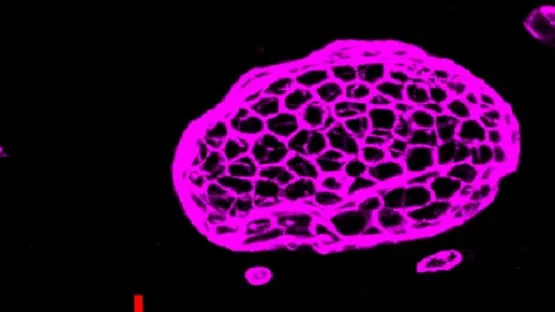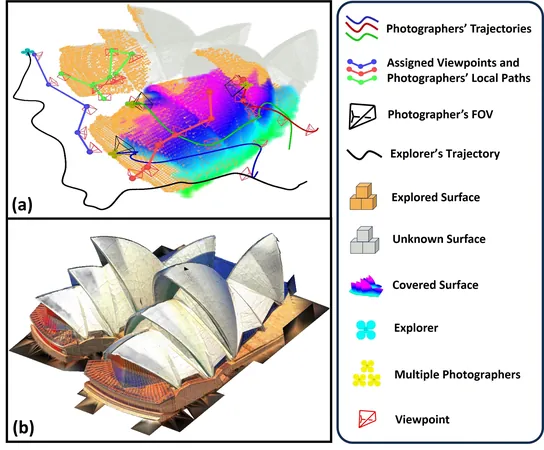
Breakthrough Study Reveals How Psychedelics Alleviate Anxiety – Could This Be the Future of Mental Health Treatment?
2024-09-24
A groundbreaking study has unveiled how classic psychedelics like DOI (2,5-dimethoxy-4-iodoamphetamine) effectively activate specific brain cells to reduce anxiety in animals, shedding light on a promising avenue for treating anxiety disorders. Conducted by an international team, including researchers from Cornell University and India's Tata Institute of Fundamental Research, this research not only uncovers the neurobiological mechanisms of psychedelics but also hints at the potential for developing targeted anxiety treatments without the hallucinogenic effects typically associated with these substances.
The study, published in the journal Neuron on September 24, demonstrates that DOI stimulates fast-spiking interneurons in the ventral hippocampus, a critical brain area involved in emotion, social memory, and affect. This activation appears to dampen the activity of neighboring excitatory neurons, ultimately leading to decreased anxiety levels in both mice and rats.
As Alex Kwan, an associate professor of biomedical engineering at Cornell and senior author of the study, emphasizes, “Understanding the neural pathways involved in the anxiety-reducing effects of psychedelics is imperative for designing better therapeutic agents.” Current treatments, such as benzodiazepines, are often associated with dependence and adverse effects, making the exploration of psychedelics particularly relevant.
Notably, the ventral hippocampus seems to provide therapeutic benefits without triggering hallucinations—a characteristic effect of many psychedelics. This discovery suggests that it may be possible to engineer novel “psychedelic-inspired” drugs that specifically target anxiety-related pathways without causing the psychological upheaval of traditional psychedelics.
The researchers utilized a maze experiment to gauge anxiety levels in the rodents, which typically prefer enclosed spaces over elevated, exposed areas. It became evident that after administering DOI, the animals displayed significantly reduced anxiety, preferring to explore their surroundings more freely.
In a surprising twist, when DOI was systematically infused into various brain regions, only the ventral hippocampus maintained the anxiolytic effect, indicating its unique role in modulating anxiety.
Moreover, the research highlights the electrical activity of fast-spiking interneurons, which account for just 10% to 15% of the cells in the ventral hippocampus but play a vital role in maintaining a balance of excitatory and inhibitory signals in the brain. These findings align with previous studies that have identified hyperactivity in the ventral hippocampus during anxious states, suggesting that psychedelics may help “silence” overactive neurons during these periods.
Future research initiatives aim to elucidate the role of the amygdala—another key player in emotional processing—broadening our understanding of anxiety and its biochemical underpinnings. The collaborative effort includes contributions from experts at Yale University, Columbia University, and New York State Psychiatric Institute, showcasing a unified approach to tackling mental health challenges.
With mounting evidence supporting the efficacy of psychedelics in reducing anxiety, this study opens the door to a new era of research and treatment options for anxiety disorders. Could we soon see psychedelics as a mainstream solution for managing anxiety? Only time will tell, but the promising results of this study suggest that hope is on the horizon for those seeking relief from anxiety.


 Brasil (PT)
Brasil (PT)
 Canada (EN)
Canada (EN)
 Chile (ES)
Chile (ES)
 España (ES)
España (ES)
 France (FR)
France (FR)
 Hong Kong (EN)
Hong Kong (EN)
 Italia (IT)
Italia (IT)
 日本 (JA)
日本 (JA)
 Magyarország (HU)
Magyarország (HU)
 Norge (NO)
Norge (NO)
 Polska (PL)
Polska (PL)
 Schweiz (DE)
Schweiz (DE)
 Singapore (EN)
Singapore (EN)
 Sverige (SV)
Sverige (SV)
 Suomi (FI)
Suomi (FI)
 Türkiye (TR)
Türkiye (TR)